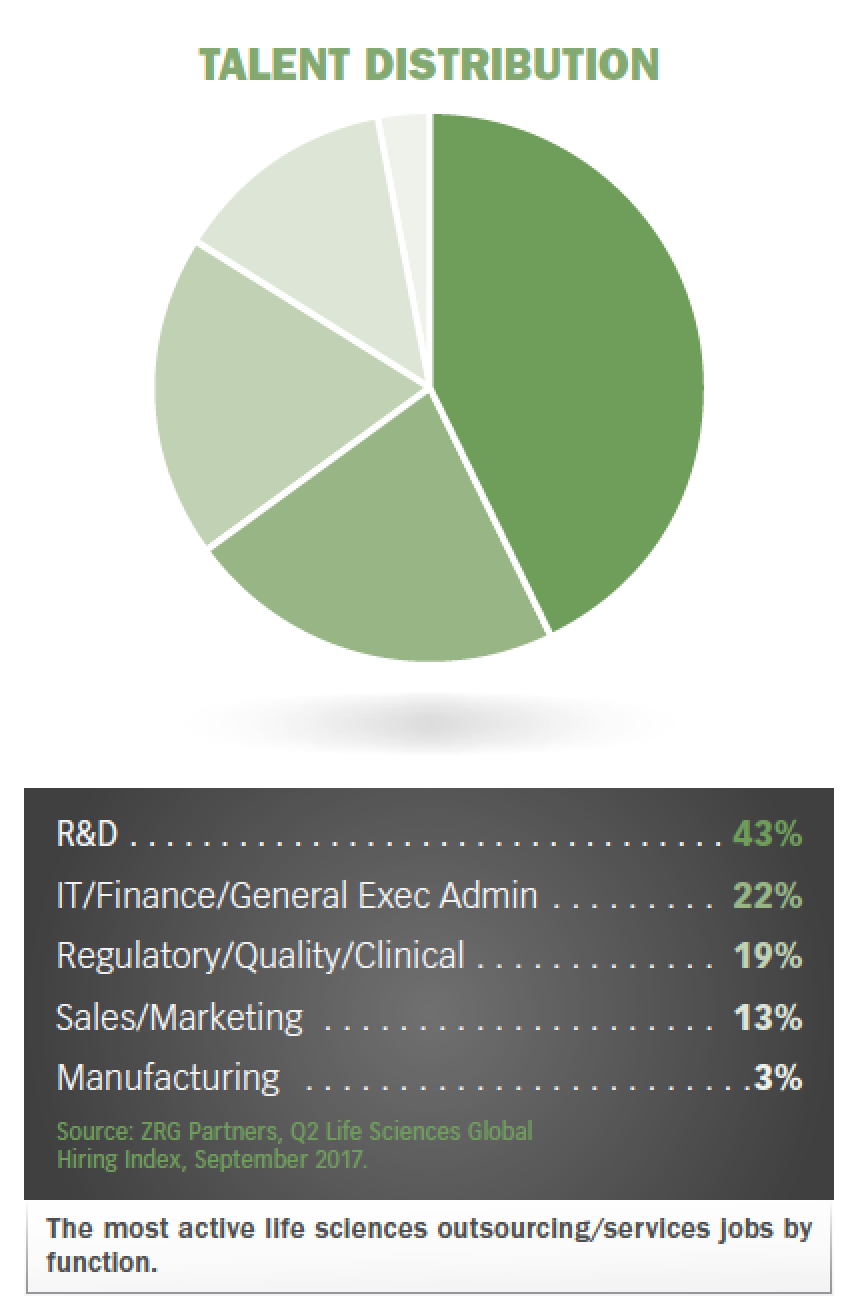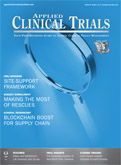Salary and Satisfaction
Applied Clinical Trials
Weighing overall workplace trends in the life sciences with new survey findings and views on job satisfaction.

To close out 2017, we wanted to gather the clinical trials professional’s view of salary and satisfaction in their current role. Applied Clinical Trials and our survey partner, SCORR Marketing, fielded the survey from the end of September to the end of October, garnering 226 respondents, one of our highest to date. The majority of the respondents work for a biopharma company (25%); in clinical operations (35%), and in a managerial role (28%).
Of course, other factors come into play for actual pay, including the role, function, geographic location, education level, and others, and some of these demographics are included in the full report.
For this article, we look at overall trends in salary and satisfaction, compared with our results, as well as other organizations that monitor professional information for the life sciences industry. Please download our free report here.
Hiring trends
According to a Q2 2017 Global Life Sciences Hiring report, nearly every geography in every functional need across life sciences decreased, except R&D. ZRG Partners, LLC, a global talent management firm within the life sciences, pharmaceutical, and medical markets, noted that R&D accounted for an 11% gain over the same period in 2016. The outsourcing/services sector comprised 43% of the R&D jobs (seer chart).
A review of the major geographies also showed the most significant decline was in the EMEA, with a 20% drop

from this time last year. ZRG attributed it to reduced activity at key industry leaders. This activity also contributed to a 14% year-over-year decline in North America. ZRG European President and Global Practice Head of Life Sciences, Adam El Din, said in a release, “The pharmaceutical and healthcare sectors in the Middle East and North Africa (MENA) region will be affected by several factors during the entirety of 2017, including a slowdown in public sector growth as a result of low oil prices, regional challenges on the back of heightened pressure on drug prices and economic instability.”
David Fortier, Managing Director – Global Life Sciences, at ZRG, added, “While results over the past year show a trend of reduced hiring activity, it is important to note that hiring overall remains robust, with this quarter posting the fourth-highest quarterly index score in the past eight years.”
Overall satisfaction
As mentioned, the majority of our survey respondents were from clinical operations, followed by R&D (15.5%) and project management at 14%. The “other” category comprised another 15% and included nursing, medical affairs, and investigators. However, by far the most in that category was clinical research coordinators.
While this begs us to delve deeper into the specific job titles for our next survey, we did ask respondents about overall job satisfaction in the following areas: salary/compensation, training/continuing education, career development, job responsibilities, and current position. On a scale of 1-5, 1 being low and 5 high, satisfaction with job responsibilities came in at an average of 3.5 and salary at 3.27. The lowest average was career development opportunities at 2.67. The good news is, more than half of the respondents (56%) are not looking for a new job. Those that are cite a variety of reasons, many around the lack of career development opportunities, which include insufficient career development options, professional advancement, and inadequate training/continuing education opportunities.
For the majority, inadequate resources was chosen as the most challenging aspect of their job in the past year. However, even for those respondents, the majority (52%) are not actively seeking a new position.
Turnover
Historically, turnover is viewed negatively both internally and externally. It can signify internal managerial problems; internal corporate problems; moves for higher compensation among those highly-skilled, high-demand positions; and more. In clinical trials, certain roles impact the business of a trial more acutely, and usually they are in the roles that touch the site or the pharma sponsor on a regular basis. According to Judy
Canavan, managing partner, HR+Survey Solutions, turnover is extremely costly to CROs. “Turnover is a

significant business issue; high turnover can undermine the relationship with a sponsor or lose a bid for new work,” she said in a release last year. Those reasons include the following:
- Create a loss of continuity that can lead to delayed timelines.
- Increased costs as a result of lower productivity, increased workload on colleagues, onboarding costs, loss of knowledge, recruitment costs.
- Impact business development as sponsors scrutinize turnover in their vetting process.
HR+Survey Solutions’ 2017 CRO Industry Global Compensation and Turnover Survey found that overall average turnover at CROs in the U.S. increased slightly to 21% in 2016 from 20.1% in 2015. That is for all positions at CROs. The top 10 countries with the highest turnover for 2016 were Taiwan, China, Hong Kong, Thailand, Malaysia, Switzerland, Sweden, Mexico, Singapore, and Turkey, with turnover ranges from 42% to 25%.
According to HR+Survey Solutions, 47% all trials are non-U.S. only, 36% are U.S. only, and 5% are both U.S. and non-U.S. With the highest number of trials being conducted outside the U.S., these continual increases in turnover rates become more important. With the year-over-year industry growth predicted to continue in the CRO industry, attracting and retaining talent is a key factor to a successful business model. According to the report, U.S. unemployment has continued to decline since it peaked in 2009, and currently is below 5%. This means that CROs have an uphill battle identifying new talent sources. Canavan suggests that CROs need to create customized approaches to retain the right talent for their company to minimize costly turnover scenarios.
Globally speaking
Our survey included 67 respondents from Europe. Their results compared pretty equally with those in the U.S., with the following outliers:
- 30% worked in biopharma and 24% in CROs.
- Slightly lower averages on overall job satisfaction rates.
- Challenges in the past year, inadequate resources, and changing role or lack of defined role were rated equally at 19%.
In a recent discussion around industry trends with the Applied Clinical Trials Editorial Advisory Board, it was noted that the increased use of CROs for clinical development activities by pharma creates its own resource issues. Specifically, the need for increased oversight by pharma of its outsourced providers. Additionally, if a company outsources for a specific expertise area, it does not internally possess it; that in and of itself creates a problem for oversight. You can’t measure what you don’t understand.
These and other topics related to professional sourcing in clinical development will be featured in our March issue. “Talent: Where is your talent going and where will you find more?” will look at current recruitment trends, pharma vs. CRO balance, new industry titles or roles and responsibilities, and more. We will be accepting articles for peer-review for this issue. Please submit your articles regarding training and development initiatives; human resource directions; or other related articles to actspecialprojects@ubm.com and/or lisa.henderson@ubm.com.

Improving Relationships and Diversifying the Site Selection Process
April 17th 2025In this episode of the Applied Clinical Trials Podcast, Liz Beatty, co-founder and chief strategy officer, Inato, discusses a number of topics around site engagement including community-based sites, the role of technology in improving site/sponsor relationships, how increased operational costs are impacting the industry, and more.
Behind the Buzz: Why Clinical Research Leaders Flock to SCOPE Summit
February 7th 2025In this episode, we meet with Micah Lieberman, Executive Conference Director for SCOPE Summit (Summit for Clinical Ops Executives) at Cambridge Innovation Institute. We will dive deep into the critical role of collaboration within the clinical research ecosystem. How do we bring together diverse stakeholders—sponsors, CROs, clinical trial tech innovators, suppliers, patients, sites, advocacy organizations, investors, and non-profits—to share best practices in trial design, program planning, innovation, and clinical operations? We’ll explore why it’s vital for thought leaders to step beyond their own organizations and learn from others, exchanging ideas that drive advancements in clinical research. Additionally, we’ll discuss the pivotal role of scientific conferences like SCOPE Summit in fostering these essential connections and collaborations, helping shape the future of clinical trials. Join us as we uncover how collective wisdom and cross-industry partnerships are transforming the landscape of clinical research.